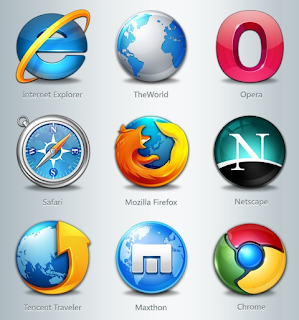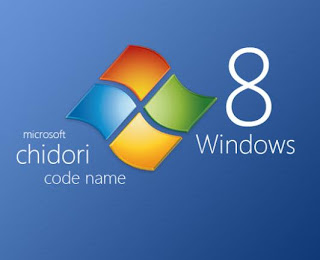The
best Android apps are getting harder to find in the increasingly crowded Android Market. So I've tried to test and rank a few top applications available for
Android phones especially for IT professionals. These apps can help connect to servers, monitor computers, access databases, analyze the airwaves, scan networks, and serve as a reference. Here are 15 of these apps, most of them free.
1. ConnectBot (Free)f you work with Unix-based servers or other network components that support SSH/Telnet connections, you can use this open source client to remotely connect. No need to get on the desktop or boot up your laptop. You can perform admin, maintenance, or troubleshooting tasks via command-line. Additionally, it supports local connections, so you can access the command-line of your Android.
ConnectBot supports generating and importing SSH keys. You can pan between multiple simultaneous connections and copy/paste between them or other applications. It keeps a history of previous sessions so you don't have to keep inputting the host address. Even better, you can create shortcuts to frequent hosts on your Android desktop.
2. AndFTP (Free or $5.59)You can use this FTP/SFTP/FTPS client to download/upload files or perform administrative tasks from your Android. It features resume support and enables the basic admin tasks: renaming, deleting, updating permissions, and running custom commands. You can also send files via email, messaging, Bluetooth, and via other apps. The Pro version adds support for secure copy protocol (SCP) connections and enables remote/local folder synchronization.
3. Linux Monitor ($2.61)If you work with Linux servers you can use this simple monitoring app to remotely keep an eye on the vitals: CPU load, RAM and disk usage, and network/port activity. View stats represented in numbers or via progress bars. Though you can monitor multiple Linux machines, you can't monitor or view them simultaneously. You must manually change the monitoring address to switch between them.
The remote Linux machine(s) must be running the Apache web server with PHP, and you must upload a simple
PHP script. You can download a
sample version to get a feel for the app.
4. Server Monitor (Free)This simple monitoring app can alert you if a server or a certain component/port of it goes down. This is great if you don't already have a monitoring/alert system put into place or you'd like redundancy. It supports TCP connections as well as SSH tunnels. You add a server hostname or IP address and then you can optionally add specific components or ports to monitor, including SSH over SSH. You can define the polling frequency and toggle sound and/or vibrate alerts. You can set the service to start up automatically during boot or enable manual control.
5. httpmon (Free)This is another monitoring app, but designed specifically for HTTP servers. You can customize a request URL and check with simple pings or with customizable conditions: the response code or time and header or content contains using substrings, wildcards, or regular expressions. You can also set the desired User Agent used for all the requests, the connection timeout, and the read timeout. On failures, it can notify, flash, alert, and vibrate your phone and/or send SMS messages to others.
6. Cellica Database for Android ($39.99 after 10-day trial)If you work with databases on a Windows server or PC, you can use this app to access and manage them from your Android. Once you install the required software on the server or PC, you'll have encrypted access to edit fields, apply select queries, filters, sorting, or even create databases. Supported databases include: Microsoft Access, Access 2007, Microsoft Excel, Excel 2007, Oracle, SQL Server, DB2, MySQL, PostgreSQL, FoxPro, dBase, R:BASE and any ODBC Compliant Database.
7. Phoenix MySql Client (Free)If you only desire a simple connection to MySQL databases, you can use this free app to directly connect. You can then view tables, views, and stored procedures. You can perform SQL queries and execute statements: select, create, insert, etc.
8. Wyse PocketCloud (Free or $14.99)This remote desktop client supports Microsoft RDP, platform-independent VNC (virtual network computing), and virtual VMware View connections to Windows, Mac or Linux machines via Wi-Fi and cellular connections. It supports both Android smartphones and tablets. You might use it to provide remote tech support or access a PC for its programs or files.
If you download and install their companion software to the Windows or Mac computer, it can auto configure the connection via your Google account so you don't have to mess with router settings or IP addresses. But you can always manually configure the connection as well.
The Pro version removes the advertisements and adds more features: multiple connections, encryption to secure the connections, sound support for RDP, and VMware View support to access virtual machines.
9. Android-VNC-Viewer (Free)If you prefer VNC for remote desktop connections and don't mind configuring the router and have static IPs or a dynamic DNS host name, you might consider using this simple open source VNC client. It supports VNC connections to most VNC servers on Windows, Linux, and Mac OS X via Wi-Fi and Cellular connections.
Unlike the Wyse PocketCloud client, this app doesn't display advertisements and gives you pinch zooming for free. On the other hand, it can't automatically secure your connections. You'd have to use a separate app, such as ConnectBot, to encrypt your connection to the computer/server you're trying to remotely access.
10. Spiceworks Mobile (Free)If your organization uses the Spiceworks IT management solution, you can use this client app to view your network and PC inventory, manage trouble tickets, and access and manage users with support of Active Directory. You can also communicate with other IT pros in the Spiceworks community to get feedback, help, or research.
11. ActiveDir Manager (Free or $1.99)This is a must-have app if you work with the Active Directory in your organization. It lets you view and manage users, groups, and computers right from your Android. You can reset user passwords, disable or edit user accounts, adjust group memberships, and perform other basic admin tasks. It supports Windows Server 2000 and later with StartTLS, SSL, or no encryption. It can directly connect to the Active Directory server via Wi-Fi or VPN.
The only difference between the free and paid version is that the paid version enables saving of the LDAP connection settings and options.
12. Wi-Fi Analyzer (Free)If you work with the Wi-Fi network at your organization you may want to use this Wi-Fi stumbler and analyzer app when setting up access points, checking channel usage, troubleshooting Wi-Fi issues, or doing Wi-Fi security auditing.
You can view and export the details of access points: SSID, MAC address, encryption, channel, and signal in negative dBm levels via a graphical bar and text readout. You can view channel graphs showing each access point's channel and signal in real-time or a recent history. Then a channel rating page gives you recommendations on which channels to use. You can use the signal meter view to find the access points.
13. SharesFinder (Free)This scans for Windows (SMB), FTP and HTTP shares/servers on the network you're connected to via Wi-Fi. It's useful if you're trying to access files on the network or when doing security auditing. For each share/server you'll see the IP and media access control address, SMB name, and vendor name.
This app also supports basic file transfers and management of the remote SMB files, such as creating and deleting files and folders. You can login as anonymous or input a username and password. For HTTP resources, it launches the web browser. For FTP resources, you can connect via a third-party FTP client, such as AndFTP.
14. Overlook Fing (Free)If you do any networking work, this is a must-have app. It can do TCP port scanning, pinging, traceroute, and DNS lookups on a network via Wi-Fi. It also shows the network details (SSID, IP details, and speed) of your current Wi-Fi connection.
You can see and export the details (MAC address, IP and vendor) for each computer or device detected on the network, which are customizable with a name, icon or notes. You can also perform a port scan or ping a particular computer or device. It can also launch third-party client apps for SSH, Telnet, FTP, FTPS, SFTP, SCP, HTTP, secure-HTTP and SMB.
16. Linux Commands (Free)If you use Linux but aren't an expert at the command-line, this is a great app to have for reference. It lists more than 500 Linux commands that you can browse through. Select a command and you'll see the syntax, description, and any command options. You can even star your favorite commands and have them shown at startup and/or manually access your list of favorites. Though you can find the same info online, this gives you quick off-line access.





























